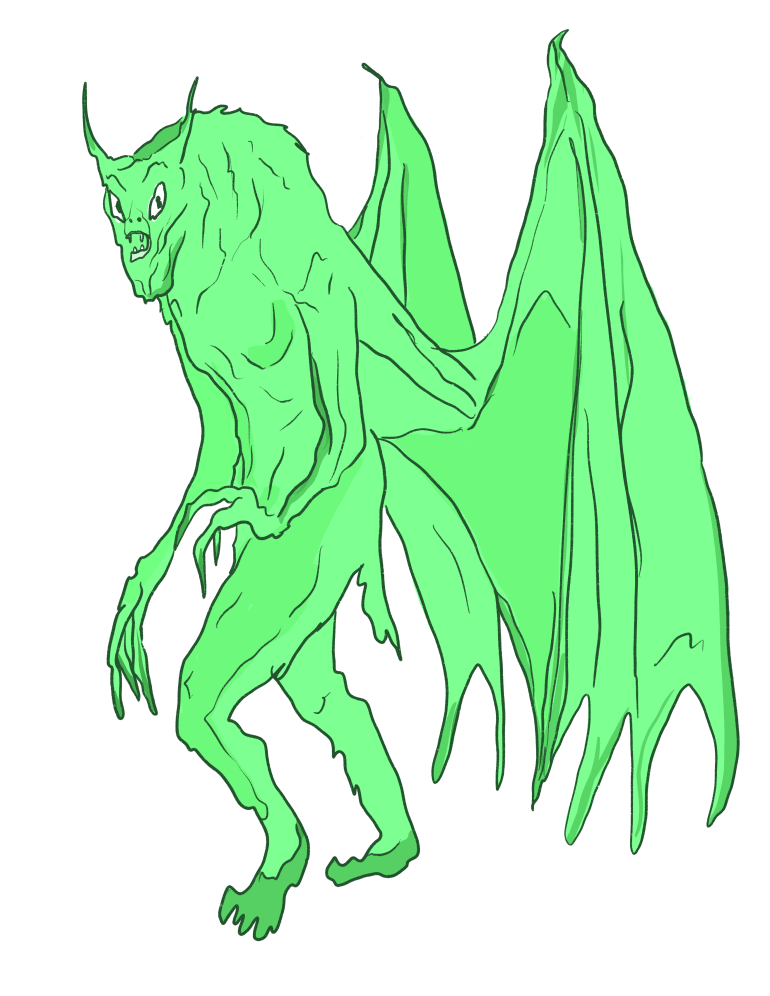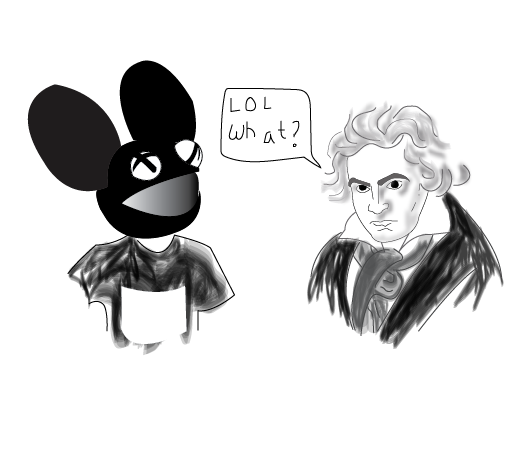For many years now Bigfoot has been a staple of Pacific Northwest iconography. His furry face can be found on everything from cheaply printed t-shirts to keychains and magnets in countless gift shops throughout Oregon. However, Sasquatch is but the tip of the iceberg when it comes to legends that make the Portland region what it is today. One of the more memorable and unique tales from the leftover cryptids is the winged horror dubbed the Batsquatch. In order to understand the origins of Batsquatch, we must go back several decades to an event that shook a generation.
At 12:37 on March 27 1980, the top of Mount Saint Helens exploded. A phreatic eruption sent a 10,000 foot plume of ash into the air, scattering debris as far as Bend to the south and Spokane to the north. March 27 would prove to be the dramatic beginning to a string of activity from St. Helens. Earthquakes, further eruptions, and lightning storms raged throughout the area for months. All these events culminated on May 18, when a magnitude 5.1 earthquake triggered part of the volcano into the largest landslide in recorded history. An avalanche of rock moving at 115 miles per hour poured over the land, covering some regions in 600 feet of stone. The corresponding eruption column rose 80,000 feet into the air, burying the surrounding area in 2-5 inches of ash. This time particles traveled far further, with half an inch of ash spreading across an area from North Mexico to Minnesota.
The 1980 eruption of Mount Saint Helens was the most destructive volcanic activity in the continental US since 1915. Fifty Seven people were killed, with hundreds left displaced and untold more left forever changed from the events. In this bed of trauma, with ash clouds still drifting through the air, stories began to emerge of a strange winged beast seen flying around the eruption site. Witnesses described an apelike body with large, leathery wings and a pair of glowing red eyes. Despite an abundance of sightings, there were no concrete encounters with the beast. Fourteen years would pass before the first close encounter was reported.
In April of 1994 Brian Canfield was driving home one night through the backwoods of Pierce County, Washington. He was miles from civilization when suddenly his car froze in place. Canfield tried to start the engine several times, but the old pickup refused to come to life. He was on the verge of getting out to take a closer look when something swooped across his headlights. At first, he assumed it must have been some large bird. His hand was on the door handle when the monster landed on the vehicle’s hood. Canfield described the creature as standing nine feet tall, with a bat’s face and wings attached to a blue furred humanoid body. He noted the large fangs in the creature’s mouth and glowing red eyes. Here is what Canfield reported in an interview with The News Tribune in Tacoma, WA in 1994:
“It was standing there staring at me, like it was resting, like it didn’t know what to think. I was scared, it raised the hair on me. I didn’t feel threatened. I just felt out of place. It’s looking right at me like in a deep stare, like right through me. It’s standing perfectly still. It stood for—how long?—a few minutes. Several minutes. Then its fingers twitched and its wings began to unfold. Those wings were as wide as the road. It turned its head and looked back at me and started flapping its wings. A few minutes later the truck just started. I took off as fast as I could.”
CR Roberts of The News Tribune interviewed Brain Canfield on his experiences with the creature, and would later publish an article detailing his story. Using Canfields description Roberts would be the first to dub the sighted monstrosity “Batsquatch,” due to the combination of bat features with the already popular legend of Sasquatch. Canfield’s account would spread the story across the Pacific Northwest. Afterwards, more locals would step forward with their own sightings of Batsquatch, including local liquor store own Butch Whittaker. Whittaker claimed to have seen Batsquatch during a midday flight in his personal plane over the area Canfield had been driving. According to him, Batsquatch had flown beside him for several minutes, before turning and disappearing from view.
After 1994 sightings of Batsquatch slowed as the article that propelled the story into the public consciousness faded from memory. Despite this, more stories have emerged in the years since. In 1998, an anonymous trucker hauling logs in northern Oregon claimed to have hit Batsquatch. The trucker contrasted Canfield’s original account by describing the creature as fifteen feet tall, with purple nose and eyes and tiny wings. In 2009, a group of hikers were making their way up Mt. Shasta when they reported seeing a flying humanoid creature with batlike features. They described what they saw as a man “stocky as Hulk Hogan, with leathery wings fifty feet from one end to the other and the face of a bat.” Despite the conflicting details, both accounts have been added to the legend of Batsquatch as additional proof.
Batsquatch fits into a wider trend of winged legends when examined alongside other stories found around the world. Mothman and the Jersey Devil are two more famous flying cryptids found here in the US. More batlike parallels can be seen in legends like Indonesia’s Orange Bati and New Guinea’s Ahool. The reason for these worldwide similarities in tales are unknown. Perhaps it’s due to a subterranean race of flying ape creatures lurking in primordial slumber until natural disasters knock them loose to fly through the night once more. Or, far more realistically there is some innate fear of monsters coming from the sky derived from predator birds. Either way, it’s fun to think of a bizarre, winged bat creature flying above the treetops like something out of a horror story.
Today, the tale of Batsquatch lives on in several venues. Fringe sections of the Internet still carefully catalog every whisper of flying monsters found in the Pacific Northwest, while dedicated cryptozoologists continue their theory crafting. More mainstream appearances of the creature can be found in Rogue Brewery’s IPA by the same name. On their website, they claim that they chose the name because “all stories of Batsquatch are a bit hazy on the details, so what better than to honor the legend with a hazy IPA?”. The most notable spotlight since the original 1994 article was found in the show “Monsters of America,” in which the hosts dissected the mystery. Other than that, the story of Batsquatch crops up every now and again in local papers and magazines. He may not ever reach the acclaim of Bigfoot, but Batsquatch will always bring a special magic to the Pacific Northwest like none other.




